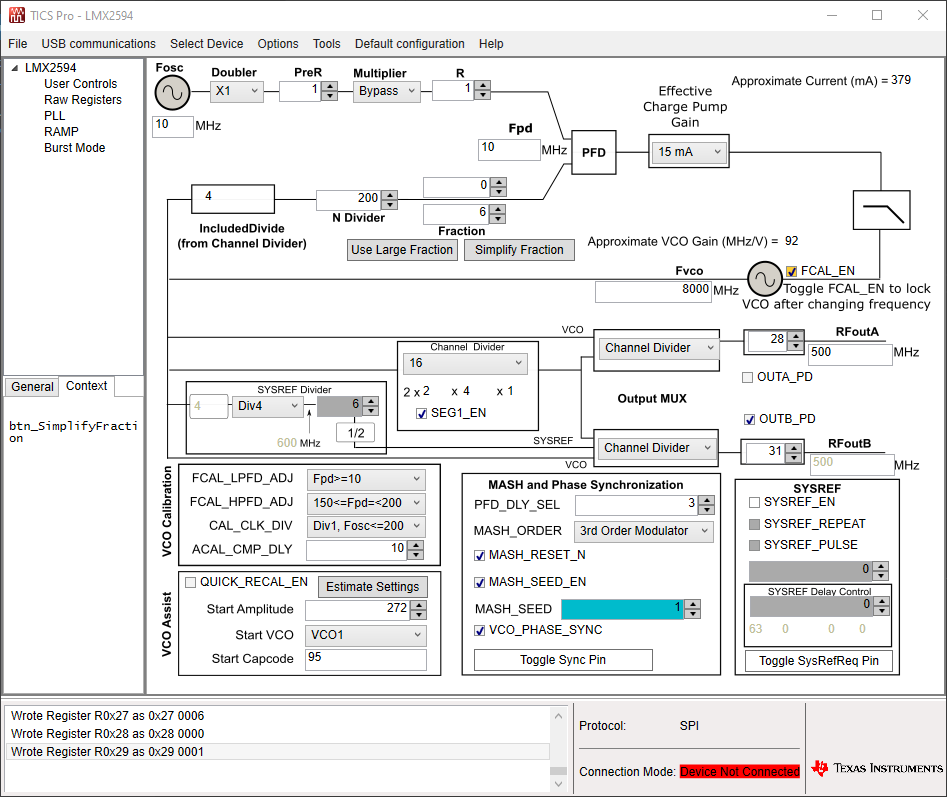Other Parts Discussed in Thread: LMX2820, LMX2572
Dear,
I would have a question regarding phase shifting between two LMX2594. I have a custom board and a custom program which imports the register file generated by the "TICS Pro" software. After the register map is loaded only the needed registers are modified(Currently only the MASH_SEED).
after the registers are loaded to both LMX boards I can get a phase sync. The problem starts after I want to phase shift the signals since the actual phase shift is quasy random
For example, below are the calculated values for both boards. After I write the registers I get a lock and phase sync at 500MHz.

From the configuration each MASH_SEED step should generate a shift of PH=360*4/(6*16)=15degree. If I write even multiple times the same value the phase will change.
the registers for the phase shift are changed as followed:
1. write register 40
2. write register 41
3. Write register 44 with MASH_RESET_N=0
4. Write register 44 with MASH_RESET_N=1
Have I missed something?

